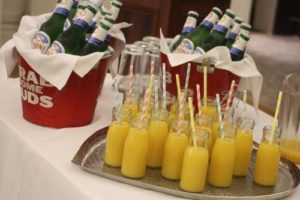
We have an ongoing research project that includes measuring event sampling and purchase intent. During this time, the process has been refined to better match the needs of the brand, and to enhance the feedback for the brand teams. Initially, we scored the teams on the number of event samples they distributed. We also scored them based on what percent of event participants said they would buy. We used these metrics to estimate potential purchase intent following an event.
This method is generally a fairly accurate measure of the success of a program. However, for this project, it wasn’t adequate enough. Although it a good scoring system, it didn’t consider all of the other things the brands could do to enhance awareness.
Updating Event Sampling and Purchase Intent Metrics
We retained the event sample metric in our new metrics, but we expanded our scope of measurement of success. We included other metrics that enhanced our ability to improve event sampling, such as:
- Did you get your brand placement at a bar or restaurant? That’s added points.
- Did you work with a bartender to add a drink that included the brand to the menu? More points.
- Did you work with a bartender to add a drink that included the brand as a drink special? More points.
Event Sampling and Purchase Intent Metrics When Good Isn’t Good Enough
Did you work with a bartender to add a drink that included the brand
We realized we still had some inadequacies to address. In one case, the teams set up a sampling tent at a large festival. They were easily able to pass out a massive number of event samples in a short period of time and got tons of brand exposure. This is great when in Miami or Los Angeles. But reps in the Midwest don’t have access to that kind of event. They had to go into bars with 70-80 customers over the course of am event evening. No matter how hard they worked, they could not match the number of event samples of a festival with 20,000 people sampled over a period of eight hours.
So, we devised a new metric that included an event threshold. If a team held more than X number of events, that added points. With those new metrics rolled up, we started to see a system that helped us to better rate the brand promoters for event samples and measuring purchase intent. At the end of the year, we plan to reevaluate to see if these changes helped to measure purchase intent more accurately. Even if it is more accurate, if it doesn’t allow for constructive feedback, we will want to make improvements. So, let’s see if I have another article this time next year about our progress measuring event samples and purchase intent.
